Here’s a list of the most beautiful villages in Switzerland located less than an hour from Austria, which are well worth a visit when you get the chance.
These six villages are members of the association “Les plus beaux Villages de Suisse” (The most beautiful Villages in Switzerland), which aims to protect and promote those villages that have a distinct architectural, landscape and historical beauty.
READ MORE: Switzerland’s ten most beautiful villages you have to visit
A pleasant journey through these small villages to discover or rediscover in just one day or combining them together.
Have you already heard of them?
Trogen (AR)
Trogen is a beautiful village nestled in the rolling hills of the Appenzell Ausserrhoden and has been the capital of the semi-canton since the division of the national territory in 1597.
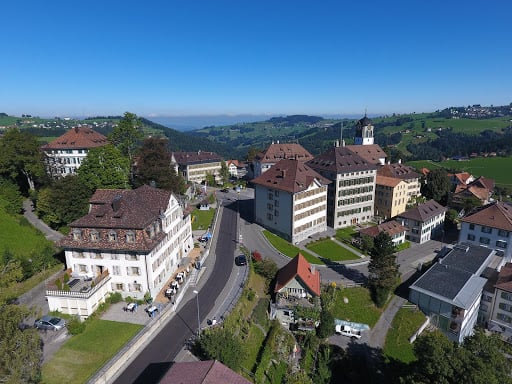
In the beautiful main square stand out majestic stone buildings and rustic wooden houses. In the 1940s Trogen gained fame thanks to the Pestalozzi Village: this children’s village was intended to welcome and train orphans from war-affected countries.
Must see:
Zellweger stone palaces: buildings from the 18th and 19th century, especially on the main square, of the rich family of textile merchants Zellweger.

20 Km from the Austrian border
Schwellbrunn (AR)
Also in the canton of Appenzell Ausserrhoden is the village of Schwellbrunn, located at 972m above sea level, which is the highest village in the canton.
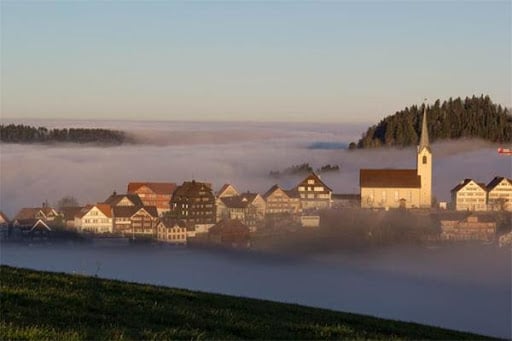
From here you have a magnificent view of Lake Constance and the beautiful Säntis mountain. In summer there is a dense hiking network with many attractive panoramic viewpoints, while in winter there are family-friendly ski lifts, cross-country ski runs and tobogganing possibilities.
Must see:
The beautiful Reformed church, built in 1648 when the municipality separated from Herisau
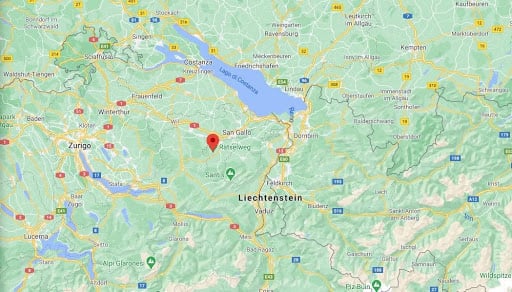
40 Km from the Austrian border
Lichtensteig (SG)
Lichtensteig is a wonderful little town in the heart of the Tonnenburg region in the canton of St. Gallen. The old town of Lichtensteig is unique in its kind, the old town in fact tightens in a semicircle around the mountain and was originally defended by ditches and boundary walls.
For those who are also looking for a quiet place in nature, the magnificent Äulischlucht gorge with a beautiful waterfall and thick forests is also worth mentioning.
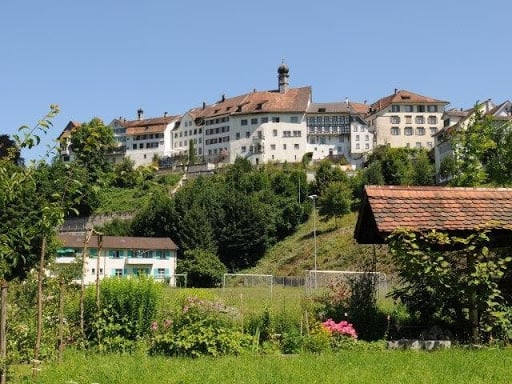
Must see:
The historical centre of the village with the church of St. Gallen.
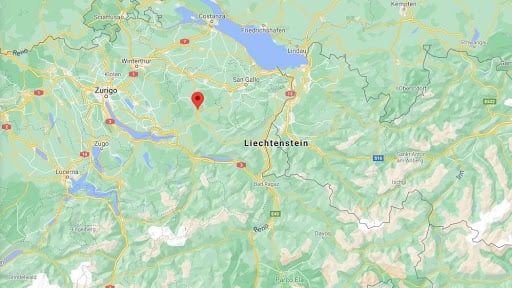
50 Km from the Austrian border
Tschlin (GR)
The small village of Tschlin is hidden in the beautiful region of the Lower Engadin in Canton Graubünden.
Unknown to most people, this little gem seduces with its authenticity and the wonderful panorama towards the gentle Austrian Alps.
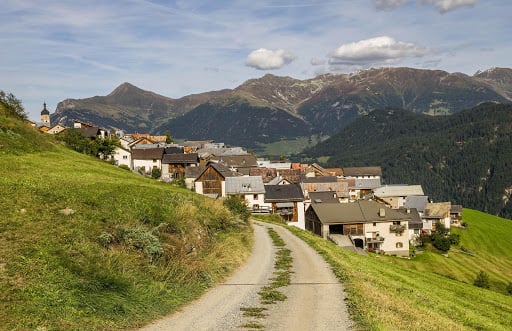
Between one barn and another there are elegant little squares and stone fountains.
Must see:
The beautiful fountains placed in the small squares like the fountain Donna Lupa.
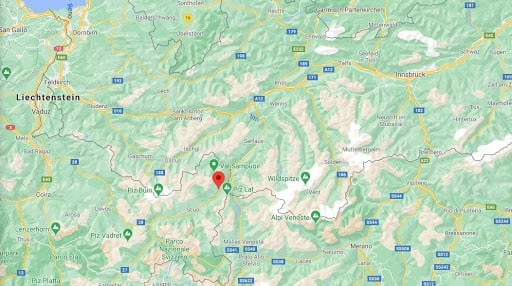
15 Km from the Austrian border
Madulain (GR)
Not far from the chaotic Sankt Moritz is the best-preserved village in the Upper Engadin: Madulain. In this small village there are beautiful houses decorated with flowers as well as small squares.
The river Inn flows right nearby and offers stunning picture-postcard views.
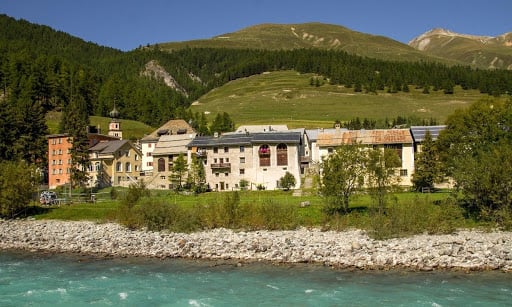
The village is also an important cultural centre: several temporary art exhibitions take place in the old barn “Stalla Madulain” dated 1488.
Must see:
On a steep rocky spur overlooking the village lies the ruin of the Guardaval fortified complex, built in 1251, the fortress was never inhabited and was abandoned as early as the 15th century.
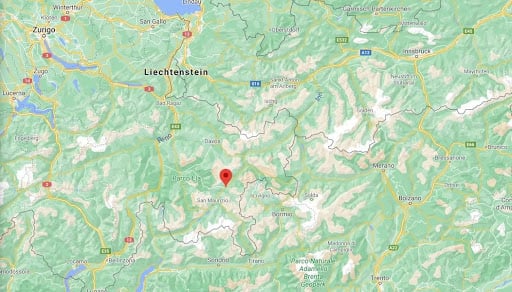
70 Km from the Austrian border
Triesenberg (FL)
High above the Rhine Valley, like an eagle’s nest, lies the Walser municipality of Triesenberg. The sunny terrace of Liechtenstein is the highest and largest municipality in the Principality in terms of surface area.
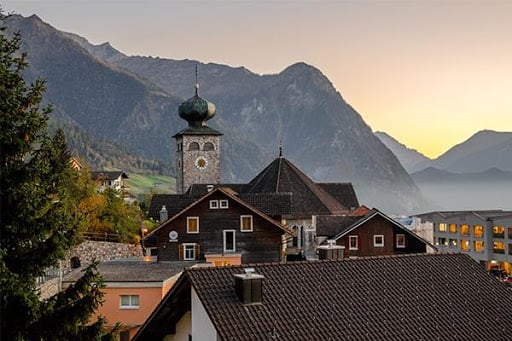
In the centre of the village stands the Rathaus, the unique “onion church” and two old wooden houses. Since 2019 the village has been integrated into the Swiss network of the most beautiful villages.
Must see:
At the Walser Museum in the centre of the village you can learn more about the origins of Triesenberg and this interesting culture.
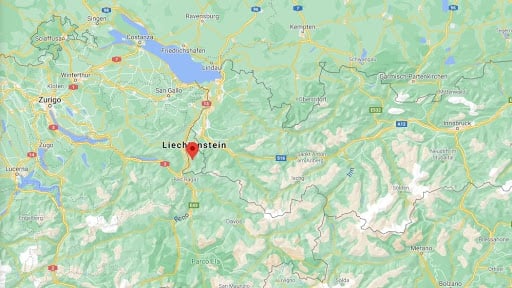
20 Km from the Austrian border
All of these villages and many more feature in the Les plus beaux Villages de Suisse free app available in English for iOS and Android.
By the way, Austria also has many beautiful villages, if someone would be interested in setting up a similar network in Austria feel free to contact us! [email protected]




 Please whitelist us to continue reading.
Please whitelist us to continue reading.
Member comments